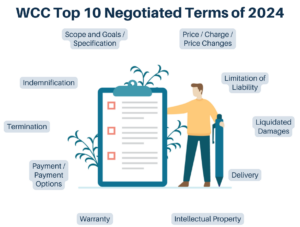NDA and Confidentiality agreements are very important legal papers. They keep secret stuff safe, like business secrets and private info. In today’s competitive business world, protecting valuable information from being shared without permission is crucial. These agreements make it a rule that everyone involved has to keep the secret stuff secret.
These agreements are used in all kinds of situations, like when businesses work together or when someone starts a new job. They make sure everyone knows how to handle secret info and not tell anyone else about it.
Understanding Confidentiality Agreement

A confidentiality agreement is a promise that says what secret info is in the agreement and how it can or can’t be used or shared. Usually, it says how long the agreement lasts, what happens to secret info when the agreement ends, and what happens if someone doesn’t follow the agreement.
It’s important to understand that a confidentiality agreement is serious in the legal world. Lawyers should make and check it to ensure it follows all the rules. A popular type of confidentiality agreement is called a non-disclosure agreement. If you’re part of a big company, chances are the legal team deals with NDAs a lot to protect valuable information.
There are different types of confidentiality agreements, depending on the nature of the relationship and the information being shared. Some common types include:
- Unilateral Non-Disclosure Agreement (UNDA): In unilateral NDA, only one party shares secret info with the other. It’s used when one party needs to keep their sensitive info safe from being shared without permission.
- Mutual Non-Disclosure Agreement (MNDA): In a mutual NDA, both parties share secret info with each other. This happens when both parties have important stuff they want to keep safe. It makes sure that both parties have to keep each other’s secrets safe.
- Confidentiality Agreement (CA): A confidentiality agreement is a kind of agreement that covers both one-sided and two-sided NDAs. It’s used to keep secret information safe in different business situations, like partnerships, working together, or job agreements.
Is a non-disclosure agreement the same as a confidentiality agreement?
People often use “confidentiality agreement” and “non-disclosure agreement” interchangeably, but they’re a bit different. A confidentiality agreement is a legal promise that keeps things secret between two or more parties. It sets rules about how secret info can and can’t be used or shared. It can be one-sided or two-sided, depending on if one or both parties are sharing secret info.
The main difference lies in what they focus on and how much they cover. A confidentiality agreement is like a spotlight, shining on specific info that needs to be kept secret between the parties. But an NDA is more like a safety net, covering a broader range of info and providing a detailed plan to protect secrets in various business situations.
Related Article: NDAs (Non-Disclosure Agreements): A Guide To Secrecy
Differences Between NDA and Confidentiality Agreement

Confidentiality agreements and nondisclosure agreements are often used interchangeably, but there are important differences between the two. While both agreements serve the purpose of protecting confidential information, they have distinct characteristics and applications.
A confidentiality agreement is a legal promise that keeps things secret between the involved parties and sets rules about how secret info can be used or shared. It can be unilateral or mutual, depending on whether one or both parties are disclosing confidential information.
On the other hand, an NDA can protect a wider range of info beyond what’s shared between the parties. It can keep things like trade secrets, financial data, marketing plans, and other important info safe in a business relationship. Another big difference is how they’re used. A confidentiality agreement is often used at the start of a business relationship when people are sharing secret info as part of buying or selling something. It sets up rules for keeping that info secret between the parties.
Related Article: Contract Law: Understanding Legal Agreements
Can a Non disclosure Agreement and a confidentiality agreement be used together?

You can use both agreements together, especially when you want extra protection for secret info.. Even though people often use “confidentiality agreement” and “non-disclosure agreement” interchangeably, using them together gives a stronger shield for sensitive info. By using both, businesses create a solid set of rules for keeping their secrets safe. The NDA focuses on specific info shared between parties, while the confidentiality agreement covers a wider range of protection.
Using both agreements is really helpful in complicated business setups, like when companies team up or merge. It makes sure everyone involved follows the same rules about keeping secrets and understands what they can and can’t do with the info. To manage both agreements effectively, businesses can use special software. This software makes it easier to create, check, and keep track of agreements. It keeps all the agreements in one place and makes sure everyone sticks to the rules.
Related Article: Merger And Acquisition Contract: A Comprehensive Guide
Situations where an NDA is commonly used

Joint Ventures: When companies work together on a project, they often share secret info that needs to stay private. It makes sure this info doesn’t get shared with others.
Third-Party Relationships: Sometimes, businesses hire outside companies to do work for them. These companies might need to know secret stuff, so this agreement keeps it safe.
Potential Investors: Startups and business owners often need to show their plans and secrets to investors. This agreement stops the investors from telling anyone else.
New Employees: Companies make new employees sign agreements to keep company secrets safe. This includes things like customer lists and secret plans.
Related Article: How To Enforce Contract Legally? Expert Tips
The Anatomy of a Strong Agreement

Having a strong confidentiality or nondisclosure agreement is crucial for safeguarding sensitive information and trade secrets. These agreements need to clearly explain what “confidential information” and “trade secrets” mean so everyone knows what’s included. The agreement should say that the person getting the info has to keep it secret and only use it for what everyone agreed on.
Also, it should make clear that the person sharing the secrets still owns them and the other person has to keep them safe. The agreement should say how long it lasts and when it can end, and what will happen to the secret info afterward. If someone breaks the agreement, it should talk about what they have to do, like paying money or stopping them from sharing more secrets.
The agreement should also mention if it can be shared with others, and emphasize that the agreement itself must be kept secret. It’s important to say when the agreement starts to make sure everyone knows when the rules kick in. Many businesses use contract management software to handle confidentiality and nondisclosure agreements well.
This software simplifies the creation, review, and tracking of agreements, ensuring compliance and reducing the risk of errors. It centralizes agreement storage and management, facilitating easy tracking of duration, termination, and obligations associated with each agreement.
Related Article: Evaluate CLM Vendors: How To Select The Right CLM Solution
Errors to Avoid in Confidentiality and Nondisclosure Agreements
Vague Definitions of Confidential Information: It is important to clearly define what constitutes confidential information to avoid any ambiguity or confusion.
Vague definitions of confidential information can lead to confusion and disputes. It is crucial to clearly define what constitutes confidential information in the agreement. Here are some points to consider:
- Clearly define the types of information that should be considered confidential, such as trade secrets, proprietary data, customer lists, financial information, technical specifications, etc.
- Specify whether the information should be marked as confidential or if it includes any information disclosed orally, visually, or in a tangible form.
- Include a clause stating that anything disclosed orally must be followed by a written notification containing a summary of the disclosure.
- Exclude information that is already publicly known or in the public domain from the definition of confidential information.
Forgetting how important a detailed purpose clause is: The purpose clause in the agreement sets up the secret relationship and why the info is shared. It’s really necessary to have a detailed purpose clause to avoid any confusion or arguments.
Overlooking the Importance of a Detailed Purpose Clause: It’s really important to explain why secret info is being shared in confidentiality agreements. This helps everyone understand the situation better, sets clear rules, and makes sure the agreement is strong and can be enforced. Forgetting to include a good explanation can cause confusion, arguments, and legal problems.
This part of the agreement doesn’t just protect the one sharing secrets, it also tells the other party how they’re supposed to use the info. This makes sure everyone is on the same page and follows the agreement’s goals.
Related Article: What Are Contractual Obligations? Your Master Guide
Frequently Asked Questions
How Long Should a Confidentiality Agreement Last?
A confidentiality agreement typically lasts for 2-5 years, depending on the nature of the information involved. Some agreements may have a specific end date, while others may terminate when the confidential information is no longer considered sensitive.
Can You Negotiate the Terms of a Nondisclosure Agreement?
Negotiating the terms of a nondisclosure agreement is common practice. Both parties can discuss and modify clauses to suit their needs, ensuring mutual understanding and agreement. This process helps customize the agreement for specific situations.
Are Verbal Confidentiality Agreements Enforceable?
Verbal confidentiality agreements can be enforceable, but putting them in writing is recommended for clarity and evidence. Written agreements help to specify terms clearly, avoid misunderstandings, and provide legal protection if disputes arise.
Conclusion
In essence, confidentiality and nondisclosure agreements play a crucial role in safeguarding sensitive information and fostering trust between parties. Understanding the nuances of these agreements is vital to ensure legal protection and clarity in business relationships.
By describing clear definitions, avoiding common pitfalls, and tailoring agreements to specific situations, you can create robust documents that serve your interests effectively. Whether you use a confidentiality agreement, a nondisclosure agreement, or both, it is imperative to prioritize precision and transparency to mitigate risks and uphold confidentiality standards.





